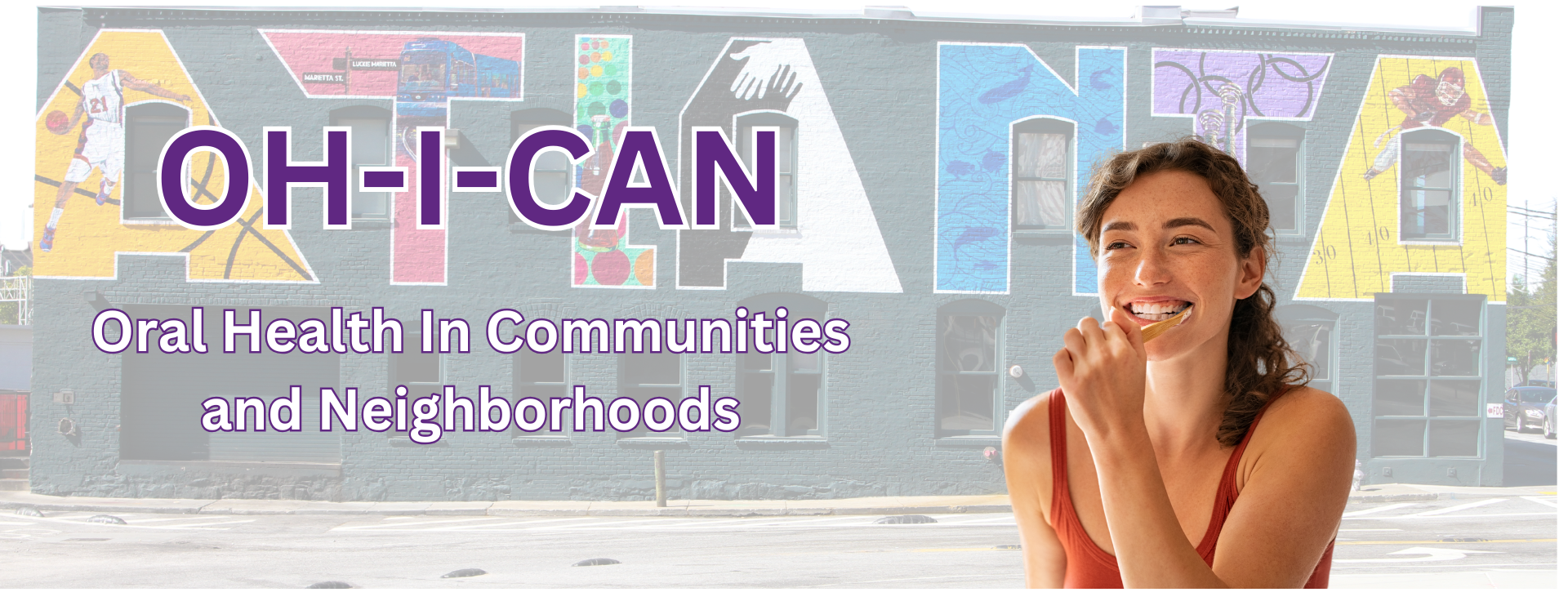


Program Description
The OH-I-Can program addresses the vast oral health disparities that exist for low income and minority families, the dental/healthcare neighborhood program seeks to create a community wide comprehensive oral health network in a low income and minority neighborhood to increase access to oral health education and oral health services.
Program Objectives
- Will provide Community Needs Assessments
- Increase the number of healthcare professionals in low income areas trained to provide basic oral health care/cancer screening in low income communities.
- Train primary care registered nurses, nurse practitioner, and nurse practitioner students to provide basic oral examinations, cancer screening and how to administer fluoride rinses.
- Improve community knowledge about oral care issues.
- Increase the dental workforce by allowing dental hygienists to perform preventive dental care via indirect supervision.
- Increase Capacity of Low Cost Oral Healthcare
Key Facts
- One in three children aged 2-5, with annual family incomes below $10,000, experienced at least one decayed tooth that had not been treated. *
- Adults in families earning less than $15,000 annually were more than 2.5 times as likely to have lost six or more teeth from decay or gum disease than adults in families with annual income of at least $35,000. *
- The prevalence of tooth decay among children with low socio-economic status (SES) is 50% higher than the prevalence of tooth decay among children in high SES. ^
- The proportion of non-Hispanic black and Hispanic high school students who visit an emergency room (ER) or urgent care center for oral or dental problems (10.3% each) is twice the proportion of non-Hispanic white high school students who visit an ER for the same problems (4.9%). ^
- Adults earning at least $50,000 are significantly more likely to visit a dentist than adults with annual income less than $15,000 (85% vs. 39%). ^
- Untreated Dental decay; the proportion of children age 2-5 years who have untreated dental decay (27%) is three times higher than the Healthy People 2010 (HP2010) goal (9%). ^
- Sealent on molars; the proportion of children with sealant on their molars (37%) is 26% lower than the HP2010 target. ^
- Early detection of oral and pharyngeal cancers; the proportion of cancer detected at an early stage (35%) is 30% lower than the HP2010 target. ^
- Oropharyngeal cancer mortality; the age adjusted mortality rate of oropharyngeal cancer, 2.8 per 100,000 population is higher than the HP2010 target of 2.4 per 100,000 population. ^
*The Centers for Disease Control and Prevention, CDC
^The Georgia Department of Public Health